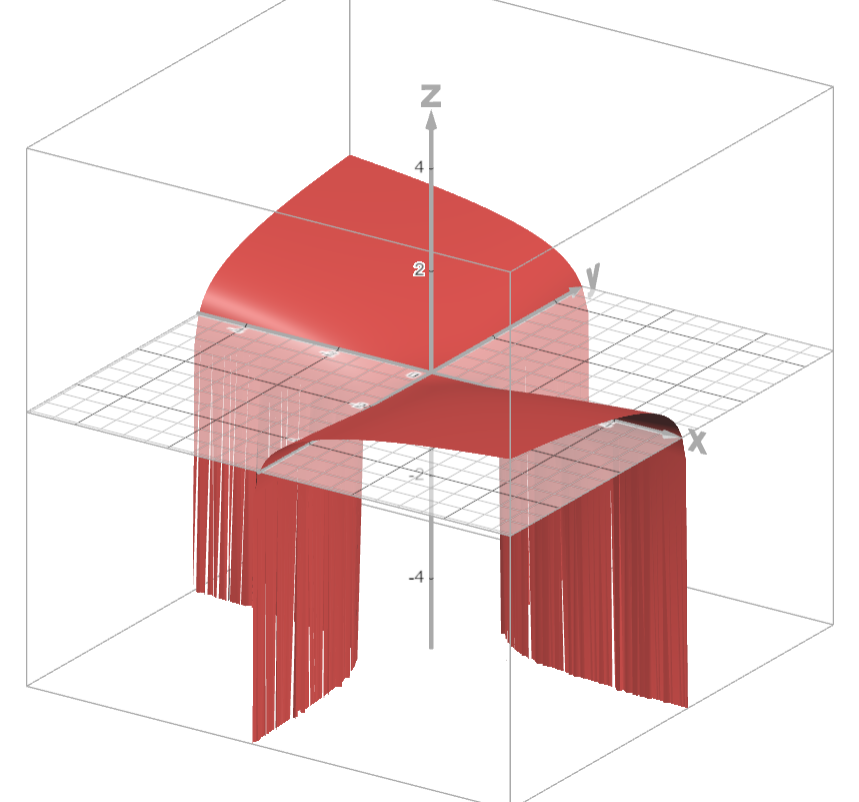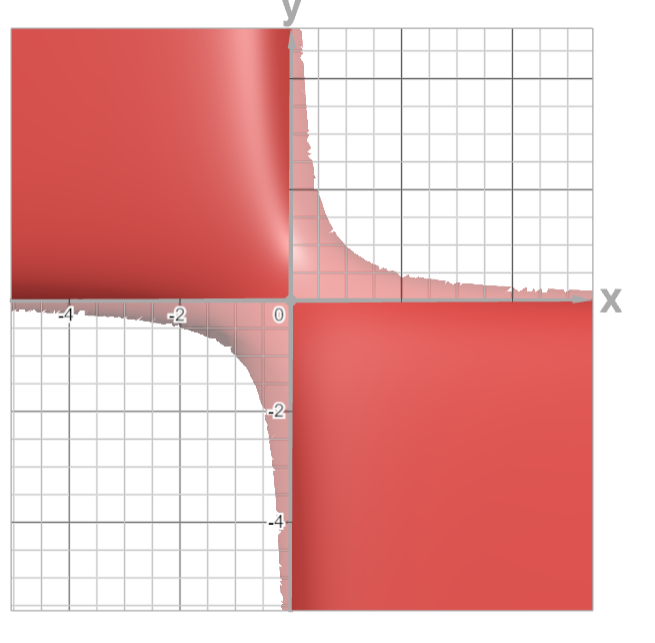A function is continuous if it has no ‘breaks’ along its curve. Continuity is a very important property, as functions are only differentiable if they are continuous. More formally, continuity is defined by limits
Definition
Continuity ^definition
Let be a real-valued function (i.e. ). Then, for some point :
That is, the limit of exists and is equal to
Bivariate Continuity
Continuity (Bivariate) ^definition-bivariate
Let be a bivariate function (i.e. ). Then, for some point :
This is essentially the same as the univariate case.
Continuous Everywhere Functions
The following function types are always continuous along their entire domain i.e. continuous everywhere:
- Polynomials
- trigonometric functions: sin x, cos x, tan x, sec x, cosec x, cot x, arcsin x, arccos x, arctan x
- exponential functions:
- logarithm functions:
- th root functions:
- absolute value function: |x|
- Hyperbolic functions
Theorems
T1: Continuity is preserved under certain operations ^t1
Let and be continuous functions at , then the following functions are continuous (at ):
- where is a constant
- ,
- if
This also applies to continuous everywhere functions
T2: Function composition preserves continuity
If is continuous at and is continuous at , then the function composition is continuous at .
This theorem is very useful in finding continuity of complex functions by breaking them down into simpler functions (decomposing) and then checking which of them are continuous everywhere
T3: Continuity of Limits ^t3
If a function can be represented as and . Then, if is continuous at .
This is very, very useful to break down limits, since we can simplify complex functions into those that are continuous everywhere, and then apply this theorem.
T4: Continuity of Partial Derivatives ^t4
If a function’s partial derivatives are continuous, then their order can be swapped.
Examples
Bivariate Examples
1: Discontinuity
Is the function continuous at (0,0)?
Solution is undefined at because it would result in a division by zero, which is undefined. Hence, since we know that the function value does not exist, it could never be equal to the limit, and we can stop here instead of checking the limit as well. is discontinuous at the point .
This is actually very easy to solve. We know that
Visuals
\usepackage{pgfplots} \pgfplotsset{width=20cm,compat=1.16} \begin{document} \begin{tikzpicture} \begin{axis}[colormap/bluered] \addplot3[ mesh, samples=30, domain=-3:3 ] {x^2/(x^2 + y^2)}; \end{axis} \end{tikzpicture} \end{document}
1: Bivariate Continuity
Where is continuous?
Solution can be expressed as a composition of functions where:
- is continuous everywhere (logarithm) over the domain
- is continuous everywhere (polynomial) over the domain
For the function composition to be valid, we need to restrict : . Then by continuity of composition, we have:
We can see this visually: #TODO ALSO FOR if
Visuals
\usepackage{pgfplots} \pgfplotsset{width=15cm,compat=1.16} \begin{document} \begin{tikzpicture} \begin{axis}[colormap/bluered, view = {60}{30}] \addplot3[ mesh, samples=30, domain=-0.8:0.8 ] {ln(1-(x*y))}; \end{axis}; \end{tikzpicture} \end{document}

2: Continuity of a bivariate piecewise function
Where is the following function continuous?
Solution
Because this function is defined differently at different locations (due to being piecewise), we need to evaluate it in a case-by-case basis:
- can be expressed as the quotient of functions where and .
- is continuous everywhere over its domain (due to being a polynomial function)
- is a composition: where and
- is continuous everywhere (square root functions are continuous)
- is the sum of polynomial functions, and is hence continuous everywhere.
- By theorem 2, is continuous everywhere over its domain.
- Hence, is continuous everywhere for (due to theorem 1)
- By definition of the function, we know that . It can be shown that . Hence since the limit is equal to the function value, is continuous at
Hence, is continuous for all
